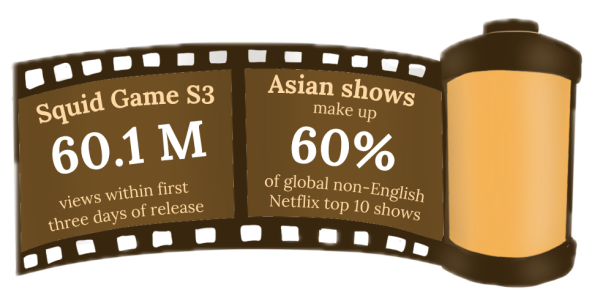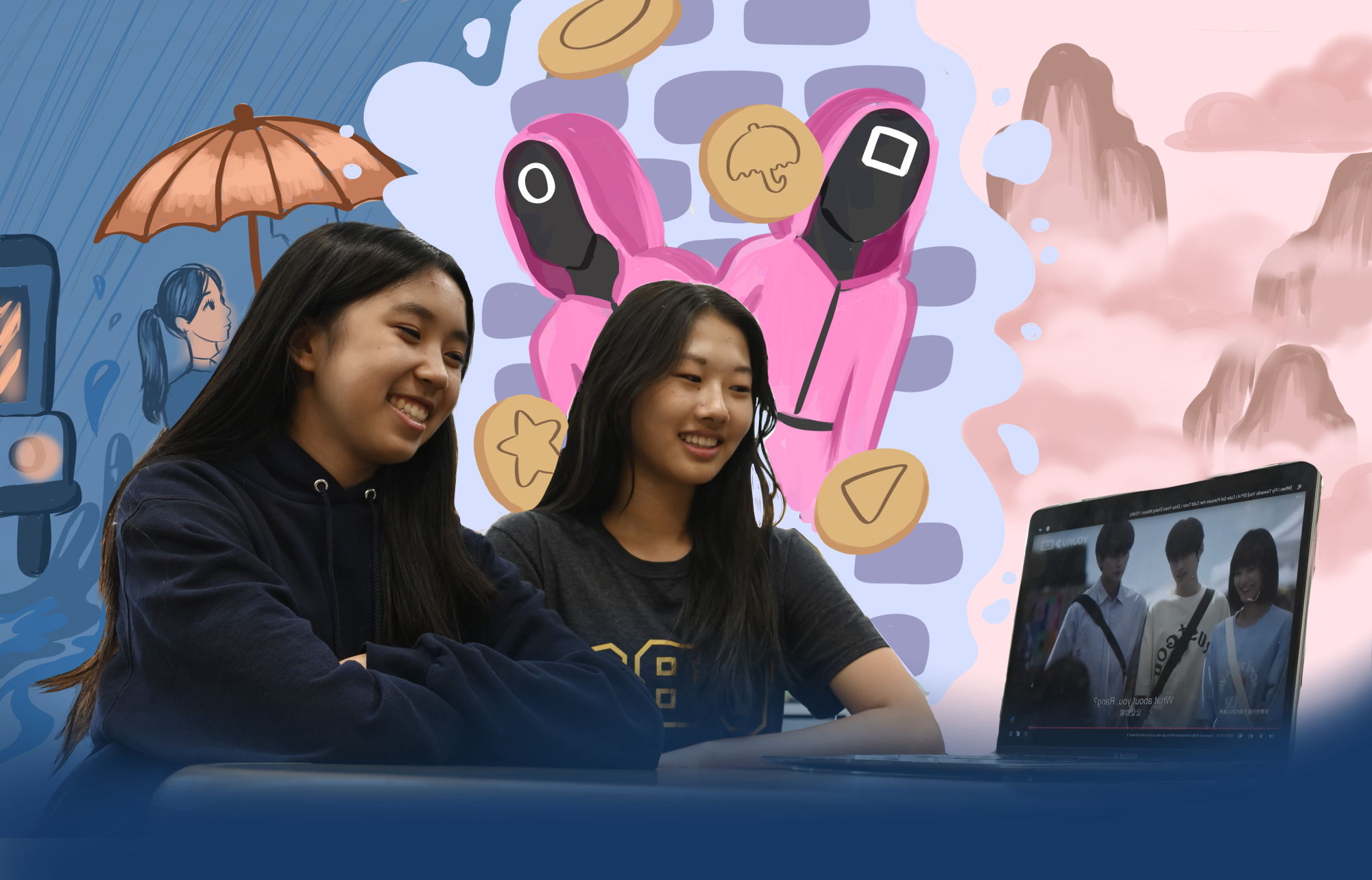After a long day laboring over homework, junior Isabelle Niu stretches, ready for a break. She instantly drifts towards the Chinese drama, “When I Fly Towards You.” In scenic shot after shot, a world of school uniforms and million-dollar smiles unfolds around her, as she follows the characters navigating their tumultuous journeys.
Following the release of international hits “Squid Game” and “Parasite” in the past six years, the entertainment industry has seen a rise of C-dramas and K-dramas in the West as a part of the Korean Wave of K-pop and K-dramas. Isabelle attributes this popularity to fan culture and a focus on aesthetics in East Asian countries.
“In C-dramas and K-dramas, there’s definitely a higher emphasis on visuals, because in western dramas there’s more action, plot and storyline,” Isabelle said. “In Asian countries there’s a huge emphasis on actors’ chemistry, since a lot of the audiences for K-dramas and C-dramas are fans of the actors.”
Especially in Korea and China, celebrities are often depicted as idealistic individuals even off-screen to appeal to fans. However, such large groups of fans have their downfalls, with the increasing idol obsession leading to multiple cases where extremist fans or “sasaengs” have intruded upon the privacy of and jeopardized their idols.
Production quality is a major element of Korean and Chinese dramas. By 2015, the average production cost per episode was 400 million won (around $300,000), and in 2018, “Mr. Sunshine” reached a record high of 1.67 billion won (around $1 million) per episode. For Chinese dramas, especially in the historical genre, styling for hair, makeup and clothing as well as architecture play an equal role to the actual acting.
Chinese teacher Xiuyu Gao added that these shows offer a unique experience that appeals to those who want to educate themselves on Chinese culture, ranging from the lighthearted stories of school life to rich, magical plots in a fantasy world setting.
“The popularity of Chinese-language dramas stems from their diverse subject matter,” Gao said. “High-quality production, exceptional acting and, in certain genres, cultural heritage of these shows are key factors in their popularity.”

Storytelling and plot play another major role in Korean and Chinese dramas. Often, they feature unique storylines and complex characters, seen in C-dramas “The Untamed,” which features a magical cultivation system laced with corruption.
Frosh Haniel Baek appreciates how Korean dramas take the time to flesh out characters and build connections between them.
“Korean shows are much more slowed down in pacing, so there’s a lot of suspense and episodes,” Haniel said. “As a Korean, I’m proud that these Korean shows are more popular because there is now Korean culture internationally. With k-dramas, Korea got much more well-known. I definitely feel more seen and more proud of my culture.”
While dramas with hour-long episodes gradually unveil their plot, microdramas or “duanju” instead condense these stories into simplified plots that viewers can watch in 60-90 second vertical shorts. Originating from China, this type of short-form content has recently faced a surge, with popular apps like Dramabox and Reelshort reaching 150 million active users and the industry making $500 million in 2021 to $7 billion in 2024. This popularity is partly due to attention in the US, with around $1.7 billion in revenue attributed to outside of China.
Isabelle believes that this diffusion of Chinese and Korean culture helps dispose of preconceived biases, allowing people to view East Asia in a more positive light. Now, even while being an ocean apart from the source material, she can reconnect with her culture and share it to others, bringing about a more accepting and open-minded society.
“People are becoming welcoming towards Korean, Chinese and Asian things in general,” Isabelle said. “People are more open about it and more willing to watch these shows. With the emergence of C-dramas or K-dramas, the western world is more willing to immerse themselves in Asian cultures, such as trying their food or traditions.”
Additional reporting by Aahana Sharma


